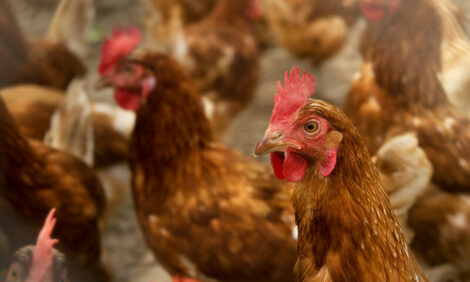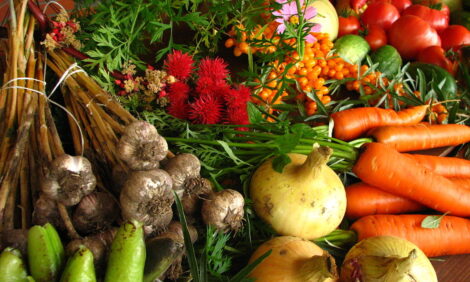



Biofuels and Livestock
URBANA - Research under way in the University of Illinois Department of Animal Sciences has developed methods for allowing the same field of corn to be used for the production of livestock feed and ethanol."The fundamentals of what we need to do are well known," explained Larry Berger, professor of animal nutrition who heads the effort, "now we are seeking to make greater improvements in the process over the next couple of years and move toward a final answer that can be used by corn growers and livestock producers."
The process is important because of the growing demand for corn by the ethanol industry, a development that could reduce the amount of corn available for the livestock industry, which relies heavily upon the crop.
"The rapid development of the ethanol industry means that the supply of corn available for livestock production may decrease in the future," Berger said. "How rapidly could this happen? Today, enough ethanol plants are being built that within four to five years that industry could be using five billion bushels of corn each year out of an average domestic supply of 11 billion bushels.
"In 2006, the livestock industry is expected to consume 50 percent of the corn crop so unless we have increased production of corn or a decrease in corn exports, there will be competition between the ethanol industry and the livestock industry for the corn." Berger's work, partially funded by ADM, looks at maximizing the food and fuel production per acre of corn.
"A field of corn doesn't have to be exclusively all for ethanol or all for livestock," he said. "We can do that by taking the corn plant's stalk and treating it to increase its digestibility. Then, we combine that treated corn stalk with distillers grain--the by-product of ethanol production--to create a quality diet for livestock." The new feed product is being used in trials with beef and dairy cattle.
Another part of the study is examining various processing options, including using corn residues mixed with distillers grains in a pelleting application and chopping corn stalks and handling them like silage in an "ag-bag," a long, sausage-like container commonly used on livestock farms.
"Some of the things we're trying are fairly high tech; others involve technology that is easily accessible to producers," said Berger. "The essence of the project is using corn stalks to produce meat and milk and the grain to produce ethanol and still have enough protein left among the stalks and distillers grain to provide a balanced diet for the livestock."
ThePoultrySite News Desk











